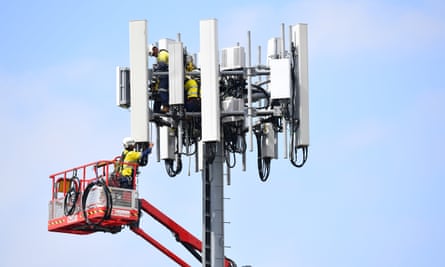What is the safest distance from the 5G cell Tower system?

If you've ever wandered through a city you might have noticed tiny 5G cell towers on the poles of street lights. They look like little boxes however they're actually sending wireless signals from cell phone providers to your phone.
The smaller ones are being replaced by larger specially-designed cell towers. Although safe distance to live from cell phone tower 're not as visible but they can still create problems for those who live nearby.
A FCC's Radiation Exposure Thresholds
The FCC's Radiation Exposure Thresholds define the maximum amount of time an individual can be exposed to electromagnetic radiation from wireless devices. The limits for exposure are based on research which show that the energy of RF could cause harm to health.
The rate of absorption called the specific absorption rate (SAR) is an indication of the amount of radiofrequency energy taken up by tissues. It's usually 1.6 Watts per kilogram calculated over one Gram of tissue.
Since 5g is able to transmit at higher frequencies this could be able to increase the intensity of energy on the skin as well as other body parts. This could lead to many possible harms, like the development of skin diseases such as dermatitis and skin cancer and cataracts.
Due to the potential for severe effects of 5g radiation, PSU has chosen to set a general localized limits on power density, which is 4mW/cm2 averaged across 1 centimeter, and not to exceed 30 minutes, for the entire 5G spectrum at 3000 GHz. This localized limit is consistent with the highest SAR that is spatially averaged at 1.6 W/kg, which is averaged over 1 g of tissue at 6 GHz.
The FCC's Maximum Exposure Thresholds
If you've ever operated a cell phone, then you're aware that a safe location from the tower should be at least 400 meters away. This is due to the power of transmission from the cell tower is significantly increased the farther the tower is.
While this sounds like something that's good however, those living close to towers may actually be more vulnerable to health issues. For instance, a 2014 study in India discovered that those who lived within 50 meters from cell towers suffered significant more health issues than those living further away from the antennas.

This study showed that residents who moved to areas further away from the cell towers saw their symptoms return to normal within a few days. what is a safe distance from a cell tower have demonstrated that exposure to extreme amounts of electromagnetic field radiofrequency (EMFs) can lead to cancer, brain tumors, and other health problems.
This is because RF radiation, which is utilized in wireless communications, may penetrate the human body's outer layer, which is the skin. This is important to understand because the skin acts as a shield against injury to the body, infection by pathogenic microorganisms, and entry of toxic substances. The skin is the largest organ of the human body. It is responsible for protecting other organs.
The FCC's Minimum Exposure Thresholds for the Minimum Exposure
The FCC's Minimum Exposure Thresholds rely on a variety of assumptions that aren't supported by evidence from science. These include the erroneous assumption that exposures to RF radiation are safe due to minimal penetration into the body (i.e., tissue heating).
This assumption does not take into account the deeper penetration of the ELF components of modulated RF signals, as well as the effects on the body of short bursts generated by RF waves that are pulsed. These assumptions are not in line with the current understanding of biological consequences of RF radiation, and thus they should not be relied upon for health-protection exposure guidelines.
Furthermore, the ICNIRP and FCC limit their maximum limit of exposure to the local SARs, based on the peak frequency of absorption (psSAR), which can be described as an inadequate dosimetric tool for determining the level of exposure to RF radiation. Particularly it is inconclusive when frequencies exceed 6 GHz. Additionally, psSAR hasn't been evaluated for RF radiation exposed to other environmental agents such like sunlight. Interactions of RF radiation with other environmental agents could cause synergistic or antagonistic impacts. This would result in the risk of having adverse health consequences. For instance, exposure to RF radiation and sunlight could raise the chance of skin cancer, and may also exacerbate other skin conditions like acne.
